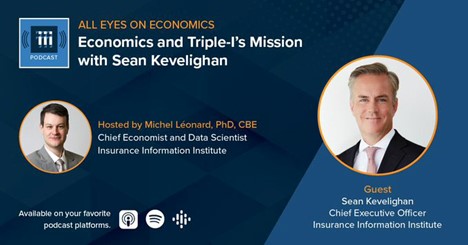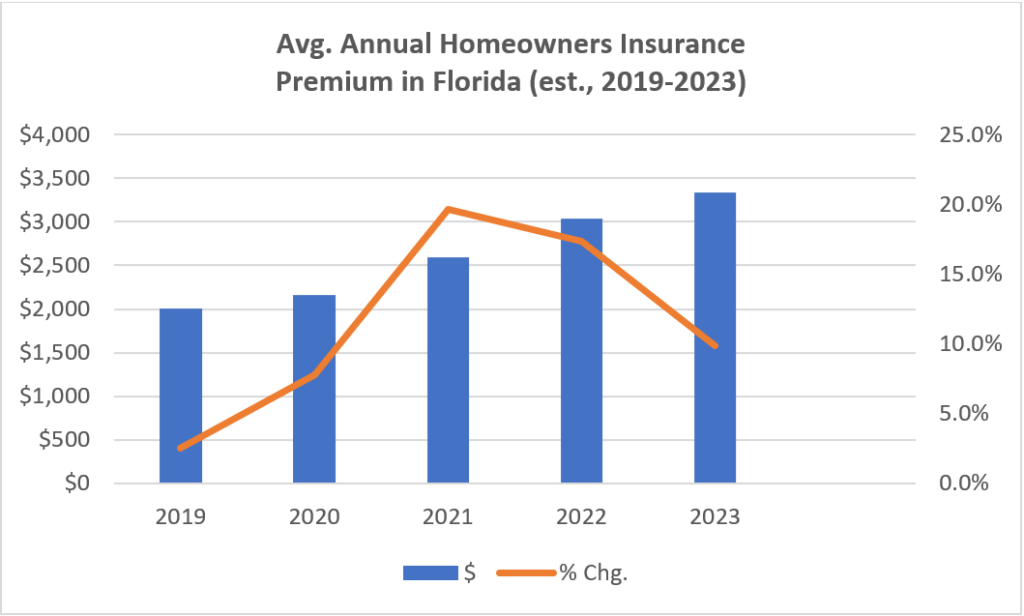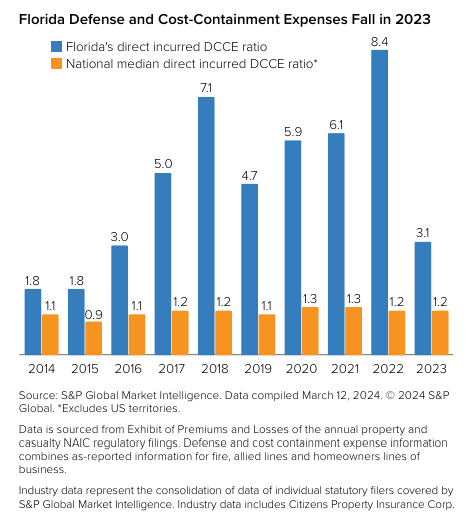
By Lewis Nibbelin, Guest Blogger for Triple-I
Though data collection and curation have always been critical to insurance underwriting, advancements in artificial intelligence and data analytics have revolutionized how data is aggregated and applied to risk assessment and pricing.
This, in turn, increases the importance of economic analysis in insurance.
“We are able to understand correlation better and make better predictions to prevent risks that formerly we were just being reactive to,” explained Josh Landau, President of the International Insurance Society (IIS), in an interview for the All Eyes on Economics podcast.
While AI and sophisticated models can gather and organize larger, more complex data sets in more interesting ways far more quickly than ever before, they can’t make the sorts of assessments or draw the kinds of salient conclusions that economists and actuaries can.
“Drawing a conclusion would be impossible for AI to do,” Landau told host and Triple-I Chief Economist and Data Scientist Dr. Michel Léonard. “Really understanding where these non-correlated issues are impacting each other and how they’re impacting decisions, that’s where I see the economist’s role.”
Similarly, while automation may expedite data processing, critical thinking and socioemotional skills have never been more crucial for underwriters. Adaptability to technological developments, as well as the ability to meaningfully interpret intricate datasets, are necessary within a constantly evolving insurance landscape.
For example, the use of telematics to track actual driving behavior has contributed to more accurate underwriting and pricing, supporting the emergence of usage-based auto insurance. A 2022 survey by the Insurance Research Council found that 45 percent of drivers made significant safety-related changes in how they drove after participating in a telematics program. An additional 35 percent said they made small changes in their driving behavior.
Ethical concerns surrounding the use of AI further underscore the significance of critical interpretation by humans.
Due to its many extensive investments and ability to determine what projects to insure – or not to — the insurance industry has an “outsized influence,” Landau said.
“As a result of that awesome depth and breadth of resources,” he said, “it’s important for carriers “to understand how they navigate through this responsibility, how they interact – not only with each other, but also with industry leaders and government leaders.”
The digitized space’s potential for inaccuracies, biases, and data breaches presents a dilemma for stakeholders at every level, so managing these risks must always take precedence.
Human oversight, diversity in AI training datasets, transparency about use of AI, and responsiveness to stakeholder feedback are all ways for insurers to utilize automated technologies while upholding the industry’s commitment to equity and security.
IIS – like Triple-I, an affiliate of The Institutes – facilitates industry dialogue through targeted webinars and its annual Global Priorities Survey and corresponding Global Insurance Forum (GIF), the next of which is held this upcoming November in Miami, Fla., in coordination with Triple-I’s Joint Industry Forum (JIF). Registration for GIF is available here. You can register for JIF here.
The full interview is available now on Spotify, Audible, and Apple.











